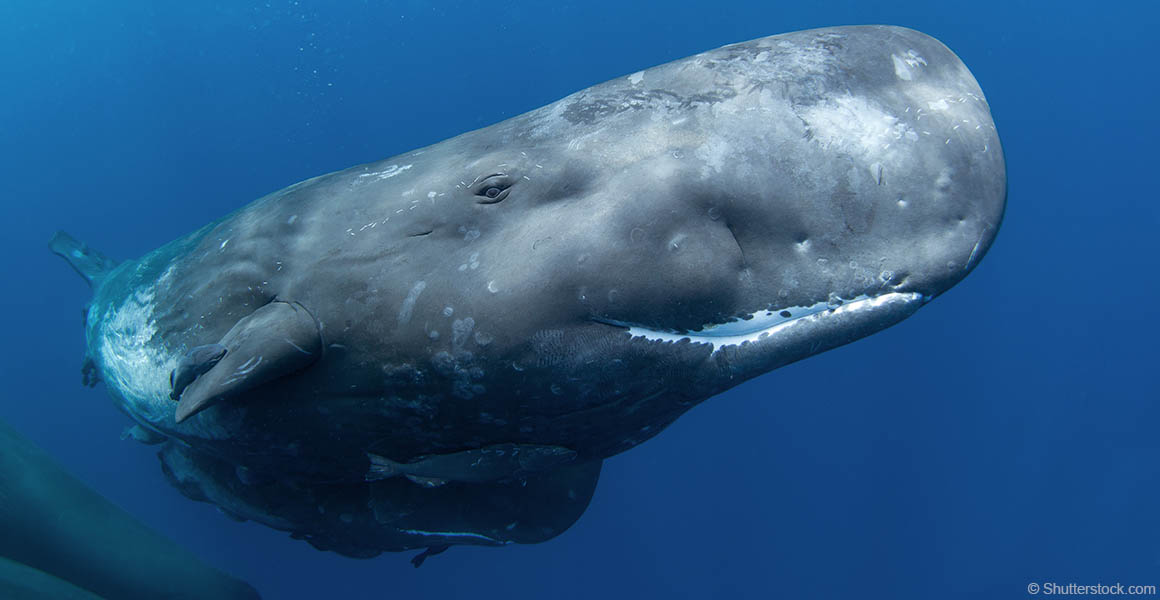Echolocation gives whales lopsided heads
Toothed whales developed asymmetric skulls to help with ecolocation, a new study reveals.
In most toothed whales, the internal organs in the skull are squashed into the left side to make way for soft tissues which help them to echolocate.
Echolocation is a technique used by animals that need to navigate and hunt in the dark. They emit high-pitched sounds which bounce off objects and are reflected back at the animal. These reflected noises help the brain to build an image of the animal’s surroundings, allowing them to ‘see’ where objects are and how they are moving.
Only some whales, dolphins, and porpoises (collectively known as cetaceans) can do this. Cetaceans are split into two groups, those with teeth and those with baleen. Baleen whales (mysticetes), including blue whales and humpback whales, filter ocean water for tiny crustaceans and fish and do not need to ecolocate. Cetaceans with teeth (odontocetes) include dolphins, killer whales, belugas, narwhals, and sperm whales, and these animals hunt in a variety of marine environments. Echolocation helps them do it.
Recent Posts
- Whale song mystery solved by scientists
- Dolphins learn the ‘names’ of their friends to form teams—a first in animal kingdom | Science | AAAS
- Dolphin mothers use ‘baby talk’ with their calves, recordings show
- Whales Consume Three Million Microplastics Per Day, New Study Finds – One Green Planet
- Whale sighting in Australia hints at ‘extremely unusual’ interspecies adoption
Archives
- February 2024
- August 2023
- June 2023
- April 2023
- November 2022
- September 2022
- March 2022
- February 2022
- January 2022
- December 2021
- November 2021
- July 2021
- May 2021
- March 2021
- January 2021
- December 2020
- July 2020
- April 2020
- March 2020
- January 2020
- December 2019
- November 2019
- October 2019
- September 2019
- July 2019
- June 2019
- May 2019
- March 2019
- February 2019
- January 2019
- December 2018
- November 2018
- October 2018
- September 2018
- June 2018
- May 2018
- April 2018
- January 2018
- December 2017
- November 2017
- July 2017
- May 2017
- April 2017
- January 2017
- October 2016
- September 2016
- May 2016
- April 2016
- March 2016
- February 2016
- January 2016
- November 2015
- October 2015
- September 2015
- August 2015
- July 2015
- June 2015
- May 2015
